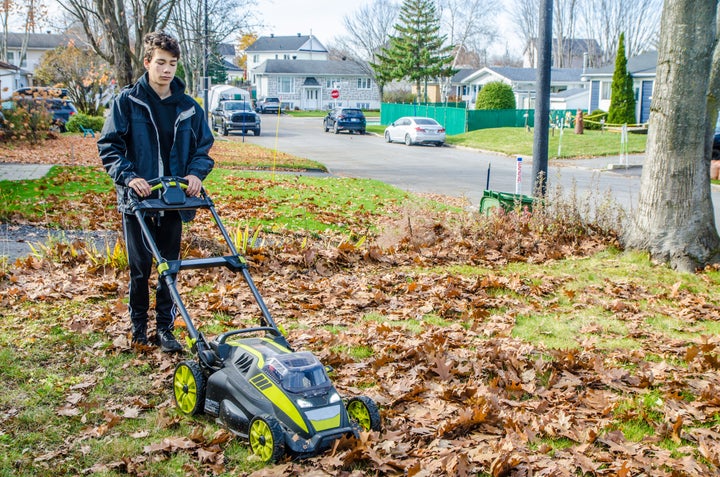
Autumn is a funny time to be a gardener, isn’t it? You’re dealing with an abundance of food and an abundance of pests at the same time; your garden’s most fruitful period gets ready to give way to its most barren.
And then, there are the leaves.
We’ve written before about how useful fallen leaves can be to your lawn (they make great compost, and can help to give hungry and cold critters a place to hide over winter).
However, making valuable leafmould (which the Royal Horticultural Society, or RHS, refers to as “black gold”) can take time ― up to two years.
Luckily, there’s an easy solution at hand. Simply replacing your rake with a mower can help to break the leaves up, hurrying along the composting process.
Here’s how to do it, and what to do with the results:
Wait for a dry, calm day
Thankfully, our current dry spell is perfect for the task. While you can get mulching blades for most mowers, experts like Monty Don say that you can probably get away with using just a plain rotary option ― provided the leaves aren’t too soggy.
“Of course[,] if the leaves are too wet they will clog the mower up so I try and sweep and rake them into a line when dry, [then] run the mower over them,” the BBC Gardener’s World presenter says in his blog.
This shreds the leaves as it collects them, making both decompostion and storage easier.
Speaking of... let’s talk storage
All those decomposing leaves are going to have to stay somewhere. One option is to make something called a leaf bay, which was Monty Don’s choice.
If you’ve got the space, you can create a special area in your lawn with materials like chicken wire and a weed-smothering membrane to keep the leaves protected while they rot.
The important thing is that you leave a weed-proof sheet between the leaves and the soil so that they don’t merge and that you cover it with something that animals can’t easily get into or that leaves could easily blow out of.
But let’s say you don’t have the space or inclination to make a bay ― that’s alright, as you can just poke some holes in a thick bin bag.
“If you don’t have room for a dedicated leaf bay then put the mown leaves into a black bin bag, punch a few drainage holes in the bottom, soak them and let it drain and then store it out of sight. This system works perfectly well,” Monty Don says.
Then, wait
Though the process of making leafmould can take up to two years, the pros say that you might get some use from the stuff after about six months with this method (though the longer it’s left, the better).
The leaves will become half-decomposed mulch, which is also good for your plants, by about Spring if you start now.
And thankfully, you don’t need to worry as much as you’d think about any smells (which was my initial concern). “The mention of ‘rot’ may conjure thoughts of smelliness, but decomposing logs, sticks[,] and leaves don’t have much of an aroma at all – just a faint scent of woodlands,” says the RSPB.
OK, so what happens when it’s done?
Older leafmould (like, more than two years old) makes amazing seed-sowing compost. It can also be mixed with sand to make garden compost, or used as a rich potting soil. It’s hard to overstate how much gardeners love this stuff.
Younger leafmould, like the kind you’ll have after about six months of storage, is suitable for “mulch, soil improver, autumn top-dressing for lawns, or winter covering for bare soil,” the RHS says.
Look, I’m down for anything that excuses me running a mower over a pile of leaves (sorry, but how fun does that sound?).